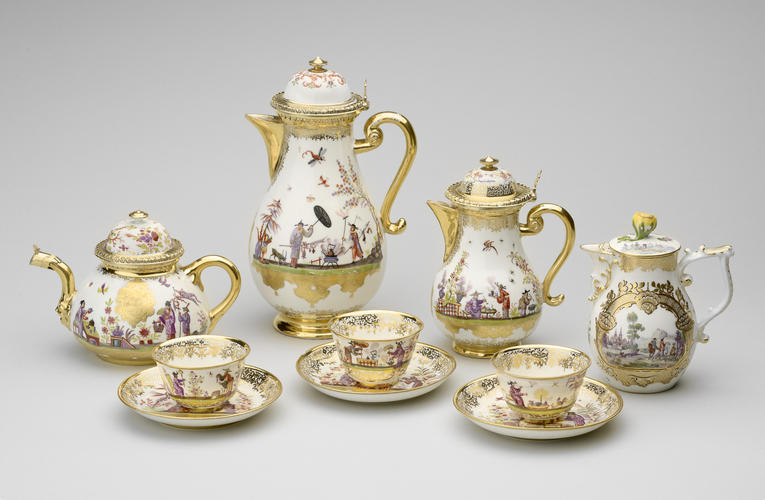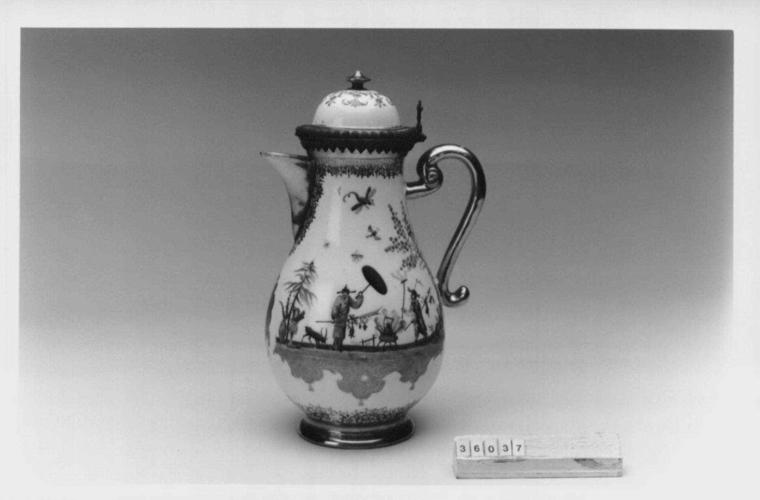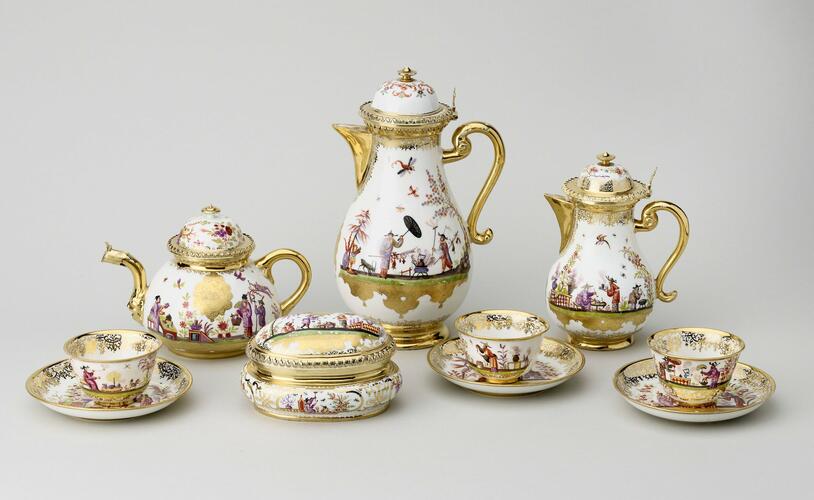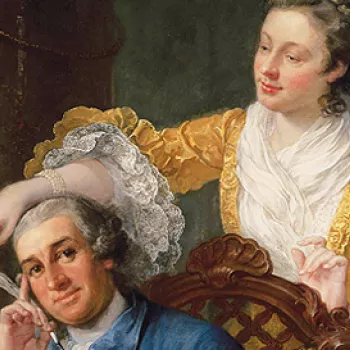Meissen Porcelain Factory
Coffee pot c. 1725
22.5 x 14.0 x 11.5 cm (whole object) | RCIN 36037
-
A Meissen hard-paste porcelain coffee pot with domed hinged cover and an S-shaped handle. It is decorated with two polychrome chinoiserie scenes and a gold dentil border below rim and spout. It has Augsburg silver-gilt mounts to the rims, joining the pieces together, and also a thumb piece of the same material.
For its tea-wares, the Meissen factory relied heavily on Chinese porcelain shapes and decorative motifs as there was no real precedent in European ceramics. The tea bowls in particular are drawn directly from Chinese examples – a similar service, though undoubtedly of Chinese porcelain, may be seen in Laroon's Musical Tea Party (RCIN 403539).
George II owned a quantity of Meissen for use in Hanover. On his visit in 1743 the King acquired a 24-piece table service, comprising serving dishes, plates, tureens, and smaller wares, probably used for the first time at the marriage ceremony of Princess Louise to Frederick, Crown Prince of Denmark. The inventories of Hanover also list blue and white 'Dresdenere porcelain' including 24 tea-cups with handles, which were purchased on the King's final visit to Hanover in 1755.
Meissen porcelain was also traded in England, via representatives from Dresden. An armorial service created for Edward Howard, Duke of Norfolk (1686-1777), for example, now in Missouri, London, Toronto and Amsterdam, is traditionally thought to have been a gift from Frederick, Prince of Wales, in return for the loan of Norfolk House in 1737-8. Frederick is also known to have made a large purchase of Meissen porcelain through Baron Adam Adolf d'Ütterodt, who was the Saxon envoy to the British court between April 1739 and November 1742. The order was billed to the Prince in February 1742 and included a complete dinner service and tea table equipage. The latter was charged at 9 guineas.
Each mount marked with the mark of Augsburg and maker's mark of Elias Adam; porcelain marked in underglaze blue with crossed sword mark of Meissen factory.
Text adapted from The First Georgians; Art and Monarchy 1714 – 1760, London, 2014.Provenance
First recorded in the Royal Collection in 1927.
-
Creator(s)
(porcelain manufacturer)(artist) -
Medium and techniques
Measurements
22.5 x 14.0 x 11.5 cm (whole object)
Place of Production
Saxony [Germany]











